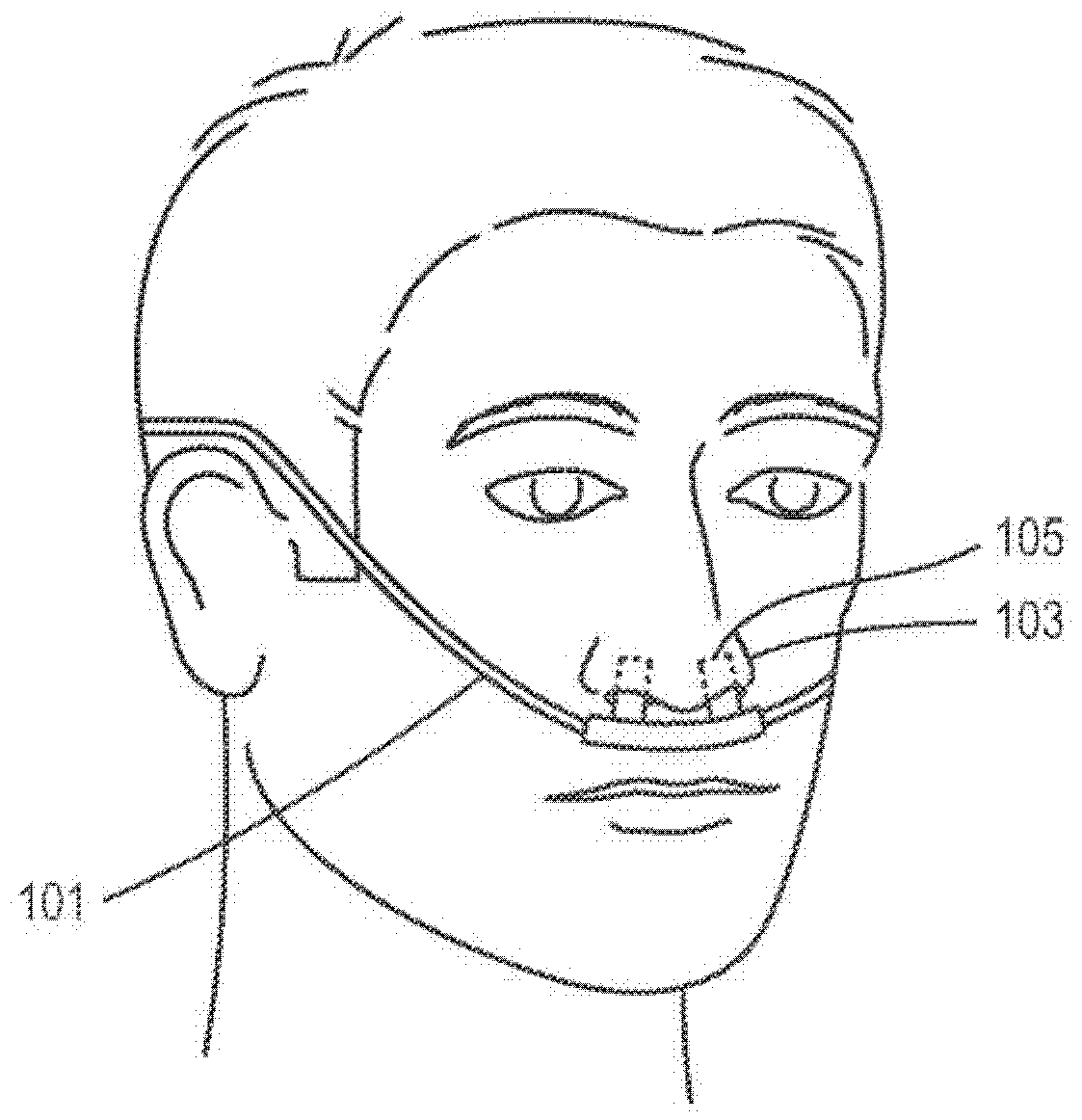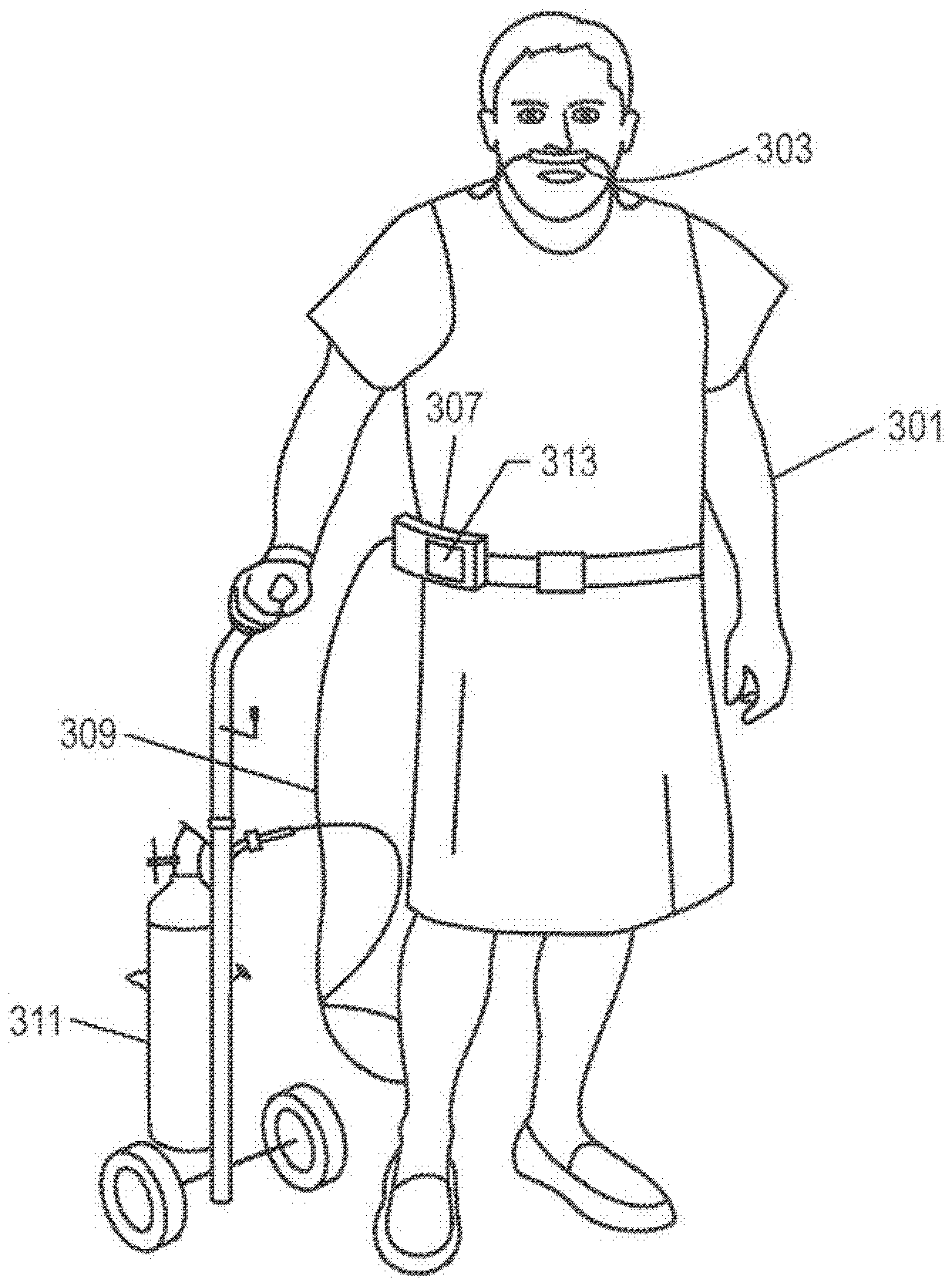Methods, systems and devices for non-invasive ventilation comprising a non-sealed ventilation interface featuring a free-space nozzle
A non-sealed, nozzle technology for open airway ventilation
- Summary
- Abstract
- Description
- Claims
- Application Information
AI Technical Summary
Problems solved by technology
Method used
Image
Examples
Embodiment Construction
[0070] figure 1 A prior art conventional oxygen delivery cannula 101 for administering oxygen therapy is shown. The extension 105 on the cannula 101 is configured to enter the nostril 103 . The proximal end (not shown) of the cannula 101 is connected to an oxygen delivery device that delivers either a continuous flow of oxygen at 1-6 LPM or a bolus of oxygen to the user's nose upon detection of an inspiratory effort. figure 1 The system does not mechanically support the patient's work of breathing, but is not believed to be effective in preventing moderate to severe forms of OSA. figure 1 The cannula is also used in another oxygen delivery therapy known as High Flow Oxygen Therapy (HFOT), in which humidified oxygen greater than 15 LPM is delivered to the user's nose at a continuous flow rate. Due to the high flow required for HFOT, the system is non-portable and the oxygen must be humidified.
[0071] figure 2 A prior art respiratory support therapy for non-invasive venti...
PUM
 Login to View More
Login to View More Abstract
Description
Claims
Application Information
 Login to View More
Login to View More - R&D
- Intellectual Property
- Life Sciences
- Materials
- Tech Scout
- Unparalleled Data Quality
- Higher Quality Content
- 60% Fewer Hallucinations
Browse by: Latest US Patents, China's latest patents, Technical Efficacy Thesaurus, Application Domain, Technology Topic, Popular Technical Reports.
© 2025 PatSnap. All rights reserved.Legal|Privacy policy|Modern Slavery Act Transparency Statement|Sitemap|About US| Contact US: help@patsnap.com



